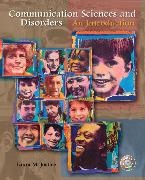Read more
List of contents
PART I Foundations of Communication Sciences and Disorders Chapter 1 Fundamentals of Communication Sciences and Disorders
Chapter 2 An Overview of Communication Development
Chapter 3 Anatomical and Physiological Bases of Communication and Communication Disorders
Chapter 4 Communication Assessment and Intervention: Principles and Practices
PART II Communication Disorders Across the Lifespan
Chapter 5 Phonological Disorders
Chapter 6 Motor Speech Disorders: Apraxia and Dysarthria
Chapter 7 Language Disorders in Early and Later Childhood
Chapter 8 Adult Aphasia and Other Cognitive-Based Dysfunctions
Chapter 9 Pediatric Feeding and Swallowing Disorders
Chapter 10 Dysphagia
Chapter 11 Voice Disorders
Chapter 12 Fluency Disorders
Chapter 13 Pediatric Hearing Loss
Chapter 14 Hearing Loss in Adults
Chapter 15 Complex Communication Needs and AAC
Summary
Communication Sciences and Disorders: An Introduction, introduces students to the field in a clear and succinct manner that allows access to the most current theories, research, and practices through rich examples and anecdotes. It employs a clinical case-based, life-span approach with special attention given to:
- The application of knowledge, skills, and concepts through comprehensive case studies that include evaluation and treatment plans and multi-media samples.
- The ecological impact of communication disorders at home, school, work, and community, with an emphasis on thinking about functional assessment and outcomes.
- Multicultural issues with an emphasis on the interactions among culture, communication ability, and communication disability.
- Research-based practices in assessment and intervention.
- Pediatric impairments in feeding and swallowing.
- Contemporary "hot topics" associated with the ongoing evolution of the speech, language, and hearing disciplines.

